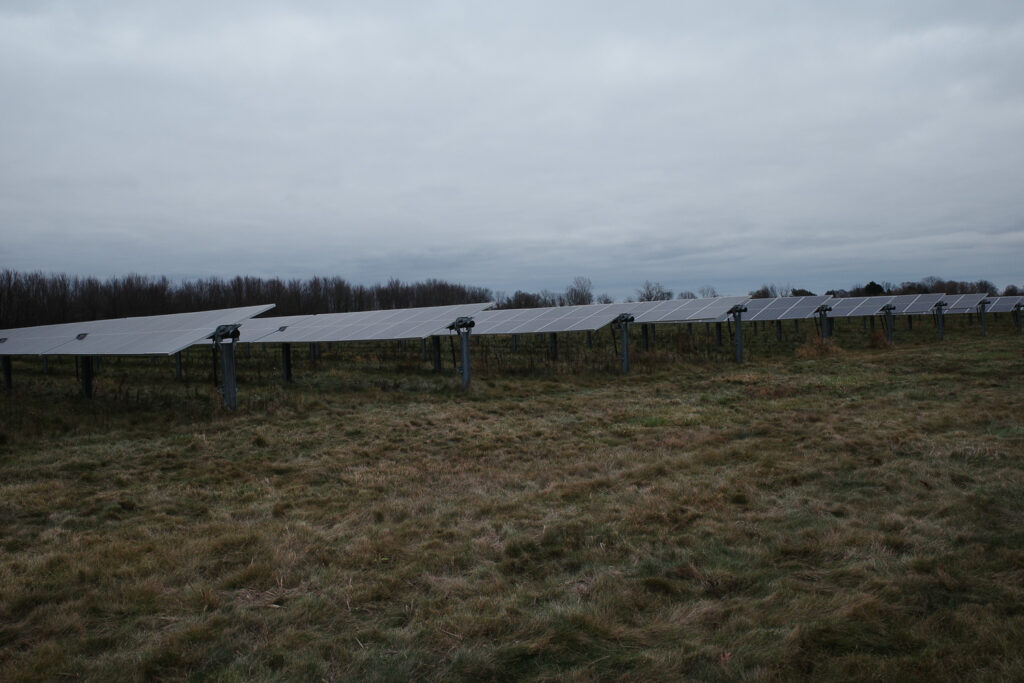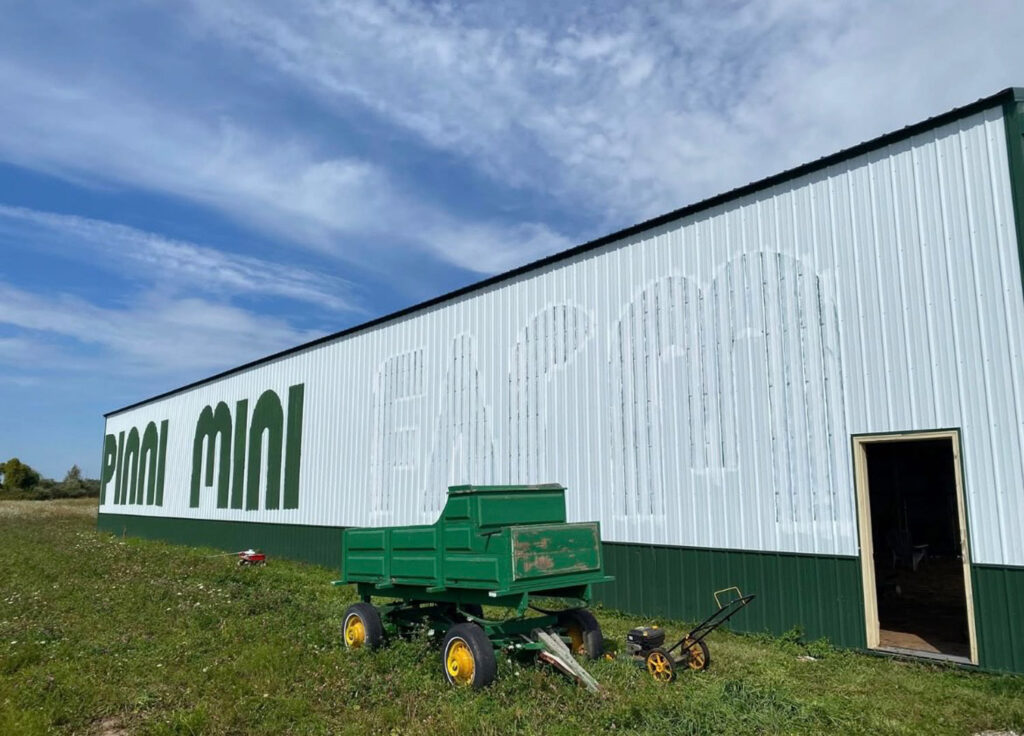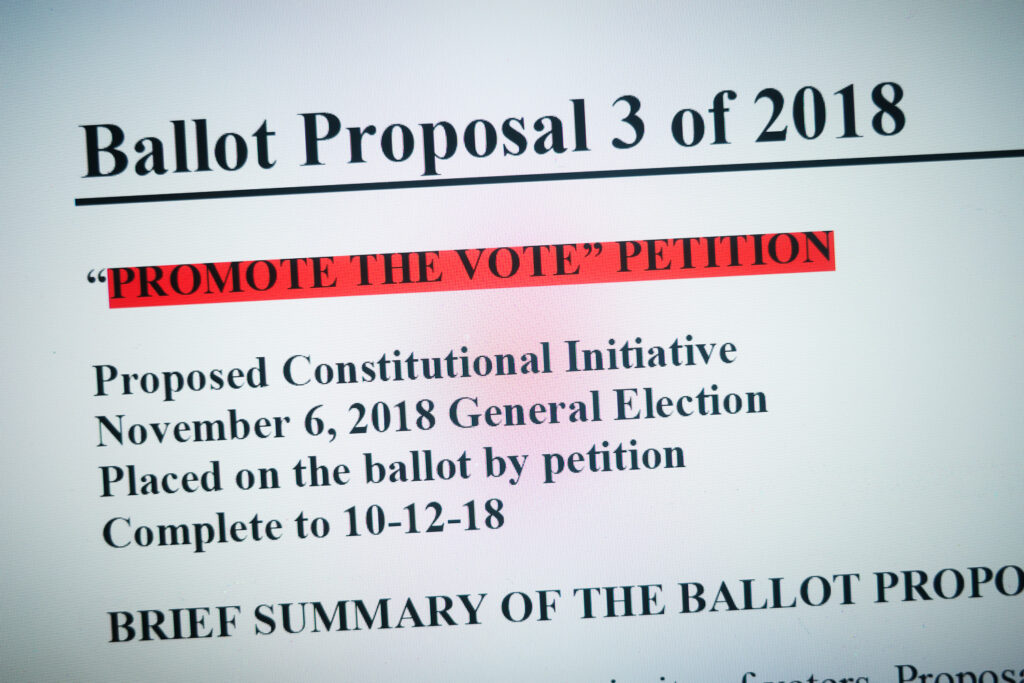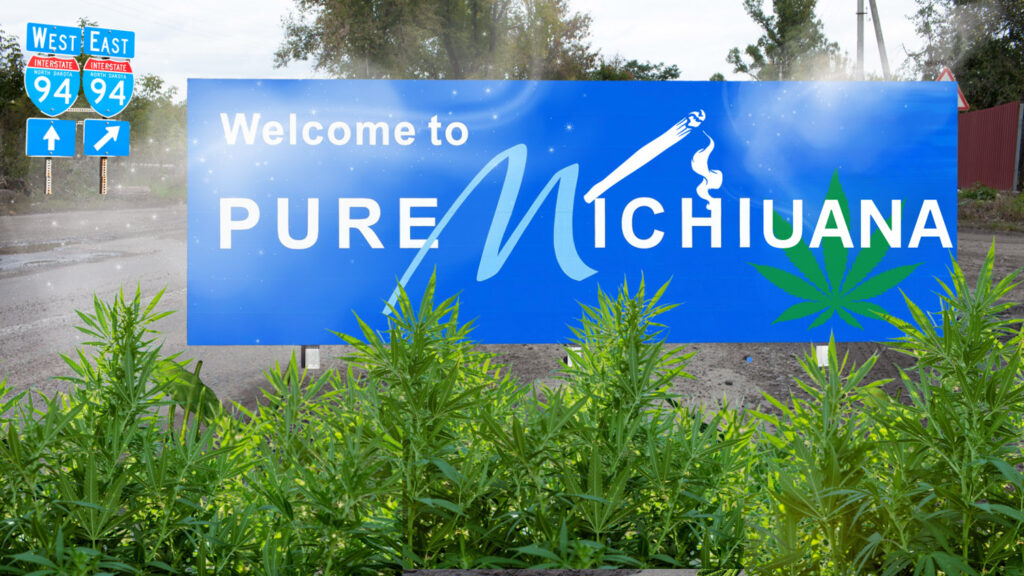The Michigan Department of Natural Resources took tremendous heat recently for a decision to cut down 400 acres of state-owned forest and replace it with a solar farm. The pushback was so intense that they backpedaled and reversed the decision, now promising that no DNR land will be used for solar panels.
That’s a welcome decision, but it doesn’t change the reality—solar panels are now everywhere in rural Michigan.
Thanks to a 2019 decision by Gov. Whitmer, 3.4 million acres of rural Michigan farmland are now open for solar energy development. Under the Farmland and Open Space Preservation Program, these landowners have been given tax credits solely for maintaining this land for exclusively agricultural use. Now they can rent it out, or sell it to solar panel developers, removing its use from food production—while still keeping all their tax credits.
The program is voluntary, with landowners enrolling for tax credits and exemptions from land assessments. And its purpose is obvious—to preserve Michigan’s farmland for farming. Farming being the thing that keeps food on everyone’s table, despite the ignorance of city-dwelling internet posters.
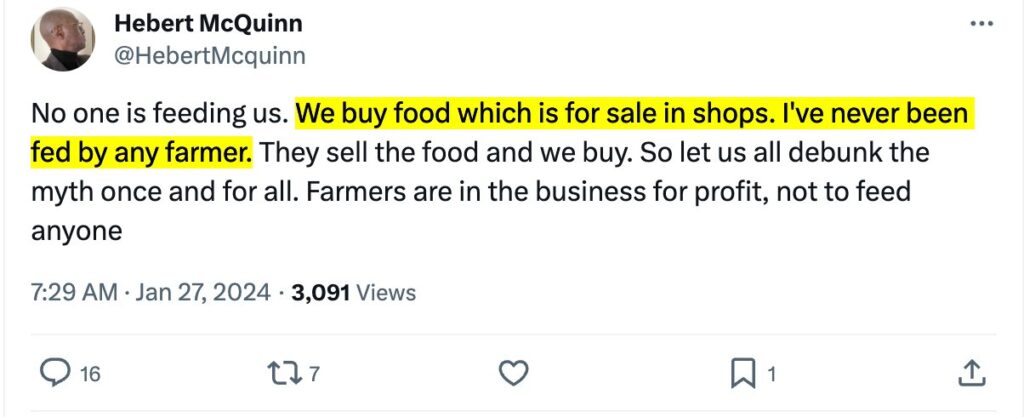
Worth noting that’s a post from South Africa, where they’re currently in the process of killing Boer farmers and expropriating their land. President Trump just announced a refugee resettlement program specifically for the Dutch-descended Boers. Perhaps a cautionary warning to their far-flung Dutch cousins in West Michigan. Look what happens when a leftist government starts messing with farmland.
Things may be dismal for South African farmers, but they’re increasingly challenging here too. There’s a ton of economic pressure on Michigan farmers. According to the just released USDA farm census, over the five-year period from 2017-2022, Michigan lost over 2,000 family-owned farms. That’s 4.3% of all Michigan farms. Beyond that, total acreage used for cropland declined over 3%.
Nationwide, Michigan State University estimates total farm income dropped $43 billion from 2023-2024, while costs of production rose. The price of cropland itself rose by over 14%. Even with increased food prices, farmers are being squeezed all over. Pressure from solar panel developers, using billions of dollars in federal grants and tax incentives, won’t help this.
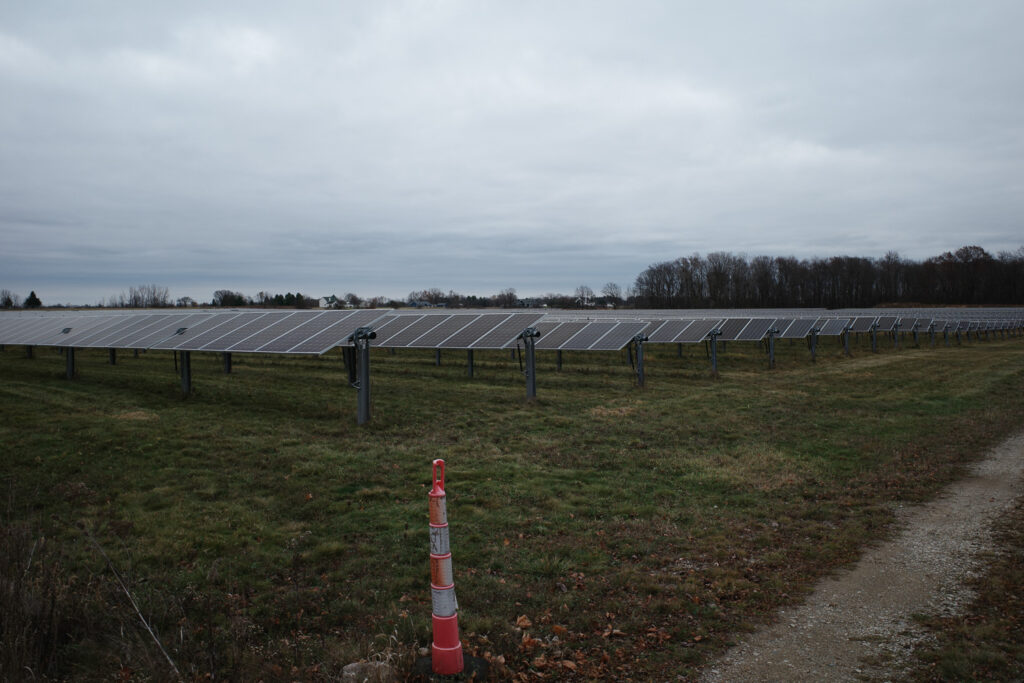
At any rate, Michigan farmland is now open season for solar panel development. Consumers Energy knows this and is developing solar projects at a rapid pace to meet the state’s ambitious green energy goals. Don’t worry, though, they promise to only use 2% of all available farmland in the state for solar development.
That may not sound like a lot, but when you consider the scale, that’s 190,000 acres of solar panels dotting the state—more farmland than Michigan uses for apples, cherries, or blueberries. It’s enough to ensure that, down every dirt road and beyond every bend, you’ll see a field of panels guarded by fences.
Sure enough, you probably already do. I wanted to see a rural solar field for myself, and one wasn’t hard to find. Less than five minutes from my brother’s farmhouse, down a series of dirt and gravel roads.
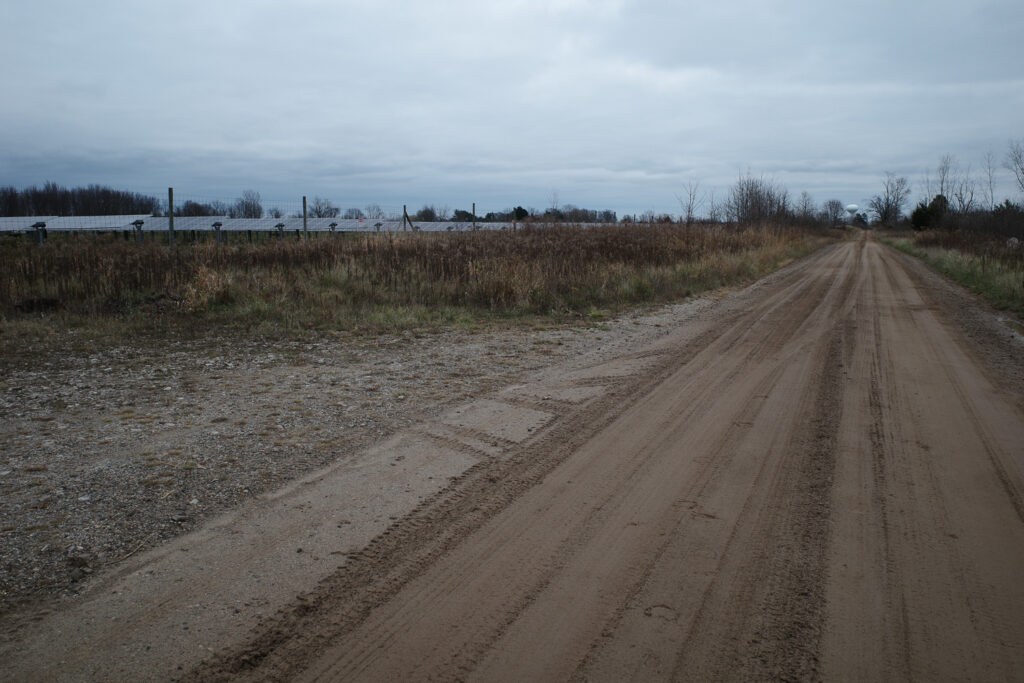
A massive complex, a series of fields of panels, protected by fences and warning signs for high-voltage cables. Cameras monitoring every inch of it. No humans on the premises. A dystopic orchard for electricity, not fruit.
Say what you will about them, but it’s a major vibe shift for rural Michigan. Acres upon acres of solar panels. Next door to a horse ranch, in this case. I’ll tell you this much, they’re way better than the windmills. Those eyesores, now dotting the state as well, are harder to ignore.
We can’t simply ignore aesthetics in our quest for energy generation. Nuclear plants and gas-fired plants may not be pretty either, but they’re mostly hidden away. You don’t see one every time you drive down a country road.
The aesthetic of rural Michigan is part of the lingering charm of our state. Turning every field into a barren lot of panels is just more urban creep from Southeast Michigan, the place most Michiganders living in rural areas are trying to avoid.
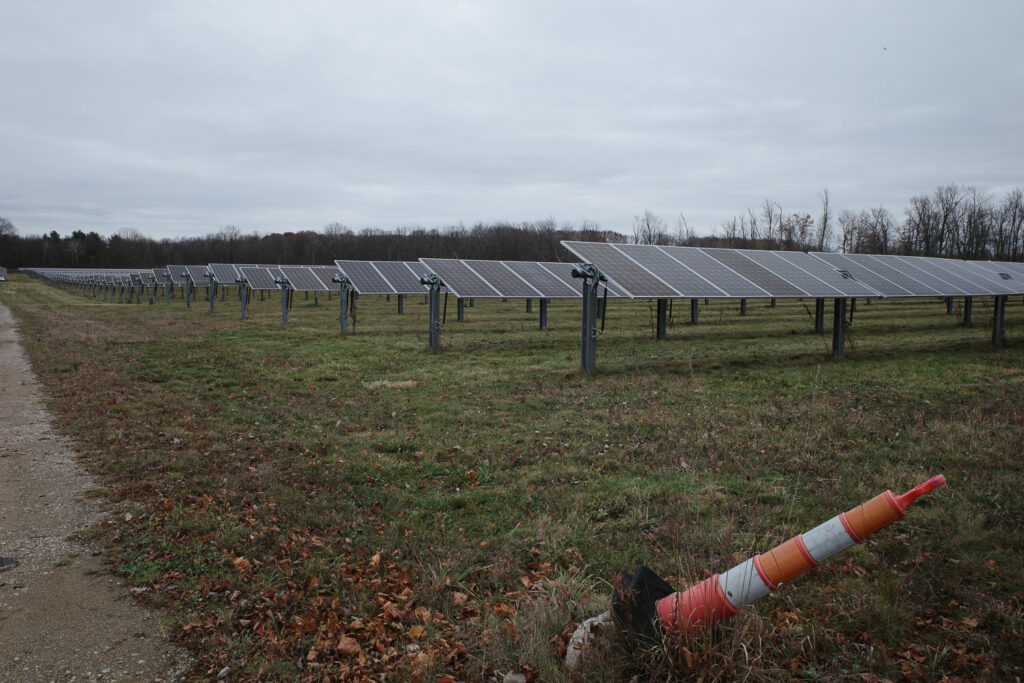
Beyond subjective aesthetic concerns, adding more economic pressure onto Michigan farmers weathering an already precarious landscape is unconscionable. Especially when we have other energy generation methods that don’t use arable farmland at all.
If eating up our farmland with solar panels is the only solution here, Michigan’s green energy push will prove disastrous.
Imagine if we spent even a percentage of the billions of dollars in green energy funding helping farmers innovate. Maybe our grocery bills would go down for a change, instead of up.
Bobby Mars is art director of Michigan Enjoyer. Follow him on X @bobby_on_mars.
